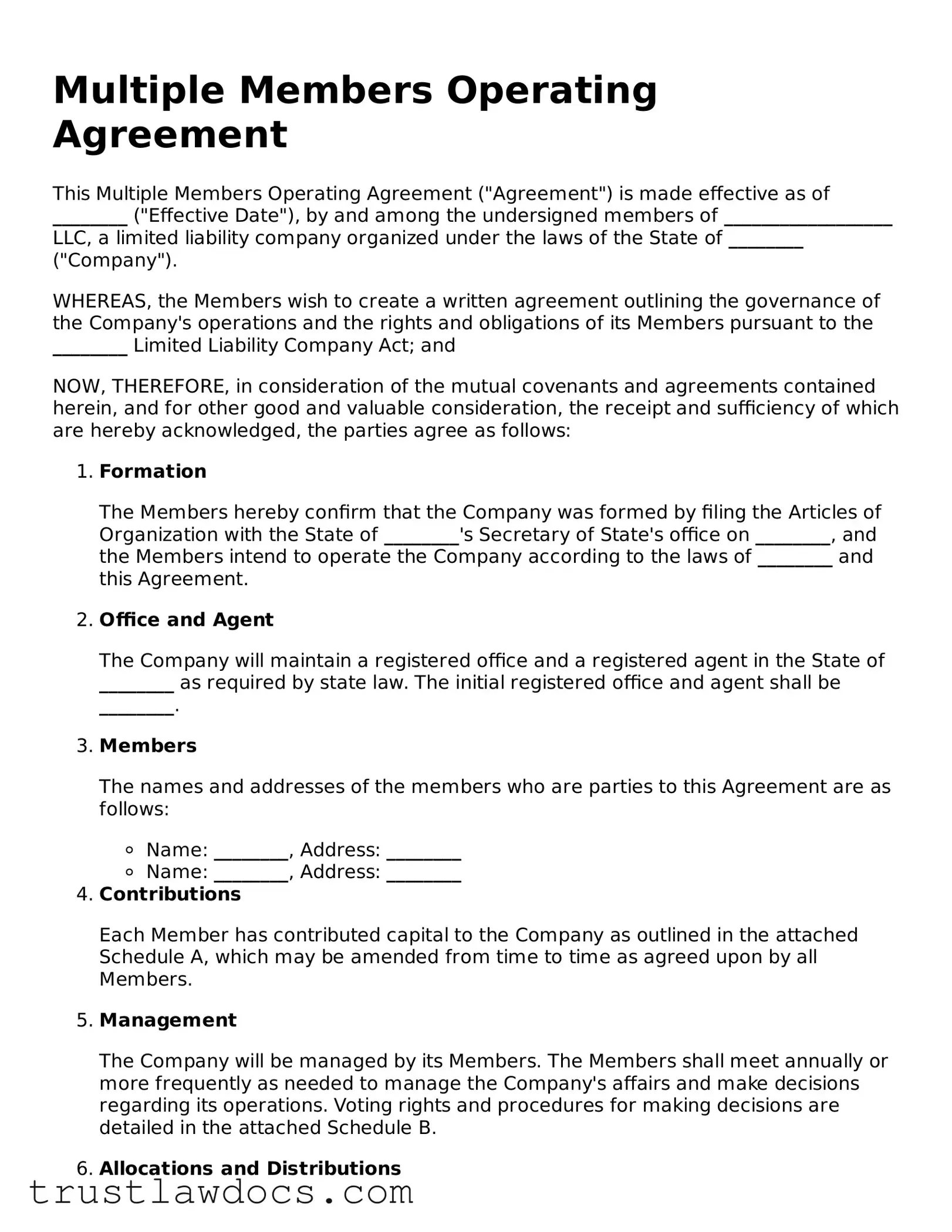What is a Multiple Members Operating Agreement?
A Multiple Members Operating Agreement is a legal document used by businesses that have more than one owner. It outlines how the business will be run, detailing the rights, responsibilities, and financial arrangements between the members. It's a crucial framework that guides decision-making processes, conflict resolution, and the overall operation of a business.
Why is it important to have a Multiple Members Operating Agreement?
Having this agreement in place is critical because it helps prevent misunderstandings between members by clearly defining each member's role and stake in the company. It also protects the business's interests by establishing processes for handling disputes, making decisions, and dividing profits and losses. Additionally, it ensures that the business operates in accordance with the agreed-upon terms, rather than default state laws that may not suit the members' preferences.
What should be included in a Multiple Members Operating Agreement?
This document should cover a range of topics, including but not limited to: the percentage of ownership each member holds, voting rights and procedures, distribution of profits and losses, management structure and duties, guidelines for adding or removing members, handling of disputes, and dissolution procedures for the business. Essentially, it includes any information that governs the internal operations of the company and the relationships between members.
Is a Multiple Members Operating Agreement legally required?
While not always legally required, having a Multiple Members Operating Agreement is highly recommended. Some states do require an operating agreement for multi-member LLCs, and even if your state doesn’t, having one can provide legal protection and ensure smoother operation. It serves as a binding contract between members that can be referred to in legal disputes.
Can the Multiple Members Operating Agreement be modified?
Yes, the agreement can be modified, but the process for doing so should be outlined within the agreement itself. Typically, changes require a certain percentage of votes from the members. It's crucial that any amendments are documented and agreed upon in writing by all members to maintain clarity and avoid future conflicts.
Who should draft the Multiple Members Operating Agreement?
While members can draft their agreement, it is wise to seek advice or services from a legal professional. An experienced lawyer can ensure that the agreement complies with state laws and is tailored to the specific needs and structure of the business. This professional guidance helps in identifying and covering all necessary aspects that members might overlook.
What happens if there is no Multiple Members Operating Agreement?
Without this agreement, any disputes or decisions regarding the operation of the company will be subject to state default laws. These laws may not align with the owners' wishes and can lead to outcomes that are unfavorable for some or all members. Additionally, the absence of a clear agreement can result in conflicts and misunderstandings, potentially harming the business's overall health and success.
Are there any tax implications tied to the Multiple Members Operating Agreement?
While the agreement itself doesn't directly affect taxes, it outlines the financial relationships and profit-sharing among members, which do have tax implications. The way a business and its members decide to distribute profits affects how taxes are filed and paid. Therefore, it's important to consult with a tax professional to understand the potential tax consequences of the arrangements detailed in the agreement.
How does a new member get added to the Multiple Members Operating Agreement?
The agreement should specify the procedure for adding new members, which typically includes a vote among current members and an amendment to the agreement to include the new member. The new member must agree to the terms of the existing agreement, and their ownership stake, contributions, responsibilities, and rights must be clearly defined and documented.
